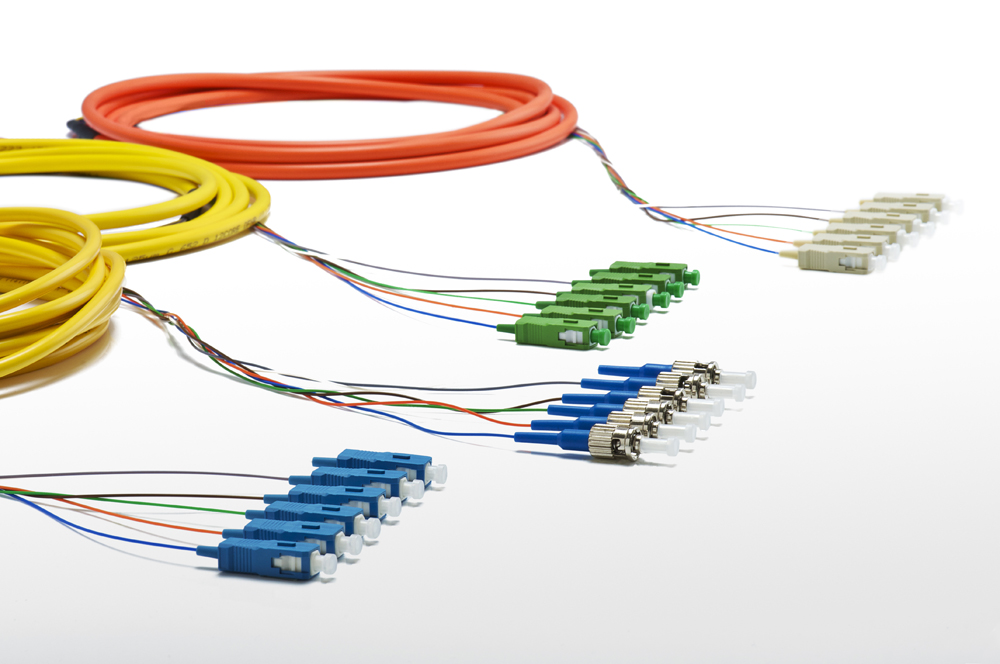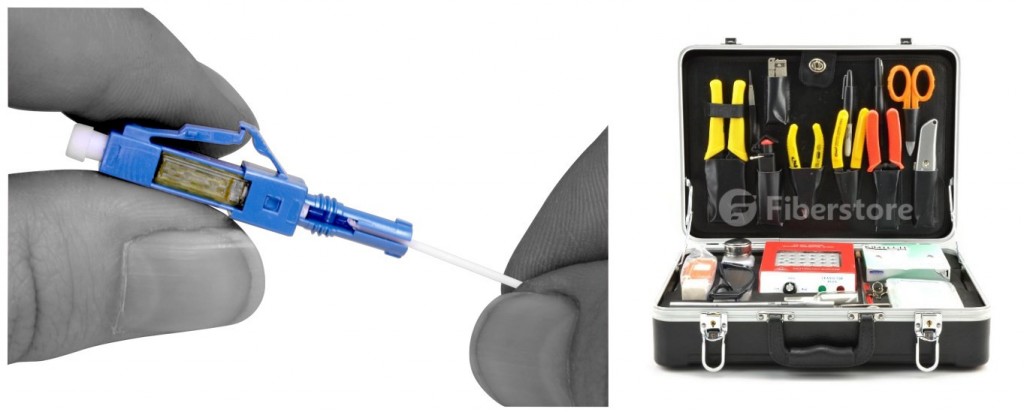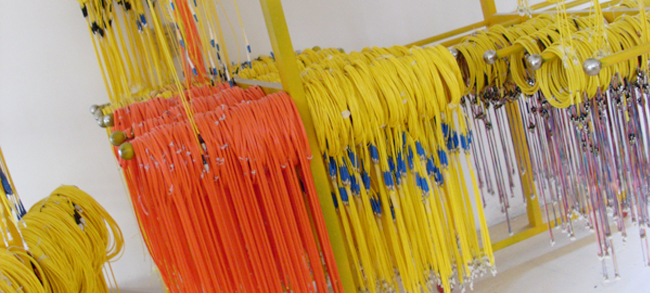While installing fiber optic cables, you will come across such questions. Should I choose to field terminate fiber optic cables or just turn to pre-terminated fiber optic cables? Which choice is better for the installation? Before jumping to a decision, you need to take a few things into consideration. In this article, we will discuss what cable construction type you need and understand why a pre-terminated fiber cable is a better choice for you.
Pre-terminated cabling systems have been in use for a number of years. Nowadays they have been regarded as the “norm” for Data Center applications. There are reasons for it.

Time saving: Without doubt, pre-terminated fiber cables can help you save a lot of time. As the products are terminated in a factory environment and delivered to site, minimal engineering or assembly work is required on site. Pre-terminated solutions also save testing time. The pre-terminated solutions can be tested at the factory and transported to site, which minimises the occurrence of faulty connections.
Space Saving: Pre-terminated fiber cable is much higher in density. And, installers need space to store the components and work areas to make terminations. Using a pre-terminated solution can be space saving as the pre-terminated links are “made to measure” and they don’t need to be stored when delivered as needed and can be put to use immediately.
Pre-terminated cables or fiber optic patch cables assemblies eliminate time-consuming field-termination processes and provide a factory-tested and certified endface. But they also have disadvantages. Prepolished connectorized fibers can cost much more than epoxy-style field-polish connectors. And cable length needs to be precisely measured. If pre-terminated cables are too short, you will have to install a replacement; if they are too long, you will have to deal with installation issues associated with managing the extra cable length, which will also cause additional expense.
As you know, optical fiber, mainly made of glass, is very fragile and difficult to install. Termination of installing optical fiber cables has always been perceived as a difficult, expensive, and time-consuming process, whether the termination is done in the field or it is an in-house operation, which discourags a lot of installers. And now, with the development of new high speed systems, termination is becoming more and more difficult. For example, multi-mode fiber networks for 40Gbit/s and 100Gbit/s applications use parallel transmission with 8 or 20 fibers per link utilizing 12-fiber MTP/MPO connectors, making it harder to terminate than a single fiber connector. Instead, a pre-terminated MPO cable would be much easier. Why not choose to field terminate fiber optic cabling systems? Here are several troubles that a field termination may bring to you.

Polishing process: Polishing the fiber is one of the most critical step in the connectorization process. Polishing is the process of creating a smooth surface by rubbing it or using a chemical action, leaving a surface with a significant specular reflection. Polishing finalizes the connector endface and cleans the surface, which has a direct impact on such optical performance parameters as insertion loss, return loss, and bit-error-rate for overall network performance. Reliable polishing processes rely on proper training and a well-equipped termination toolkit. Many installers fear connectorizing optical fiber cable, mainly due to the delicate techniques of polishing.
Connector protection: Another problem is how to protect the connectors. We know that optical fiber connector is a high-precision device with tolerances on the order of microns, it is crucial that the fiber should not only be formed perfectly to align with a mating connector, but that it should be free of any dust or dirt. Failing to do so can cause high insertion loss and high reflection, and can contaminate the equipment to which the connectors and patch cords will be connected. In a field termination process, extra attention must be paid to the handling of the collectors. Bad environment may increase the possibility of a connector failure.
Cost: Besides, fiber termination involves a heavy investment into the proper tools and test equipment to make a proper fiber connection at the location. For example, you need a cable stripper to remove the tight buffer, a ruler and a marker to measure the length and mark on the fiber jacket, and some fiber optic cleaning fluid to clean the bare fiber, and so on. The most costly part of field termination kit is going to be your cleaver. Some only cleave multimode fibers and some do both multimode and singlemode fibers. So if you decide to field terminate fiber optic cables, you must prepare all those termination tools that you need, which is a big load for field termination.
Pre-terminated fiber cable is relatively a much easier way to install fiber cable. The connectors you specify are pre-terminated for you, and the fiber cable you specify is cut to the proper length that you need. When the installation is over, you can just plug and play fiber optic system. It is perfect for beginners and also convenient for professional fiber optic installers. Many cable and patchcord manufacturers offer a cable termination service. If you have a good cable plant layout design and can accurately calculate cable lengths between termination points, all you have to do is specify what kind and number of fibers, the fiber types and connector types and the cable length that you need. Then the manufacturer would supply a completed assembly, and the cable is terminated with connectors, fully tested and fitted with protective sleeving at each end. Pre-terminated fiber cable is an excellent choice.
Pre-terminated fiber cables do offer a number of advantages for a variety of different network installations for reasons of time saving and space saving. However, it doesn’t mean that you can get all the benefits offered by a pre-terminated solution. A large amount of planning needs to be carried out prior to installation. Attention to details in the site survey process is critical, or these benefits will be lost and additional cost incurred. A pre-terminated solution is a pre-planned solution. Only when you preplan it well can it work well.
